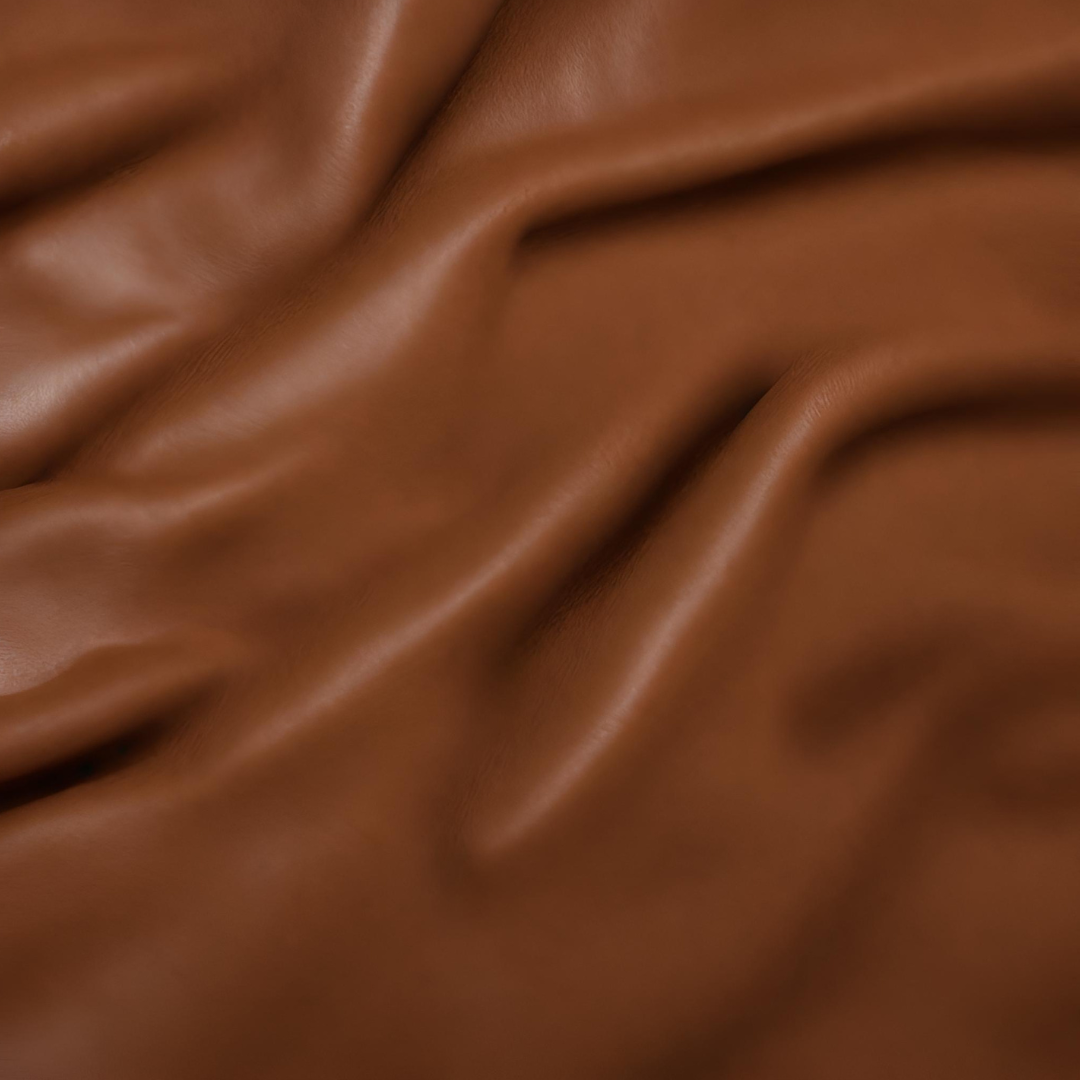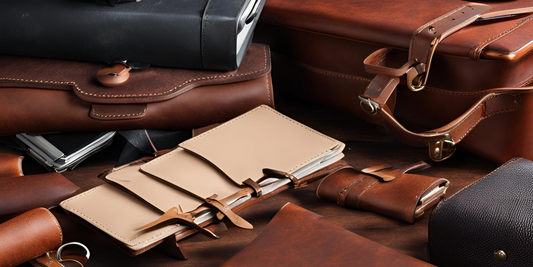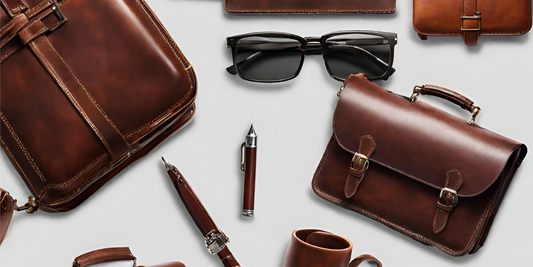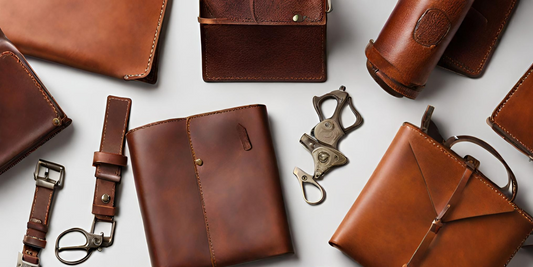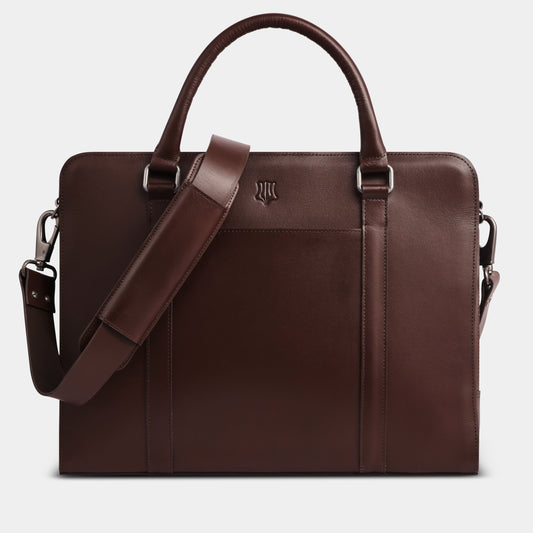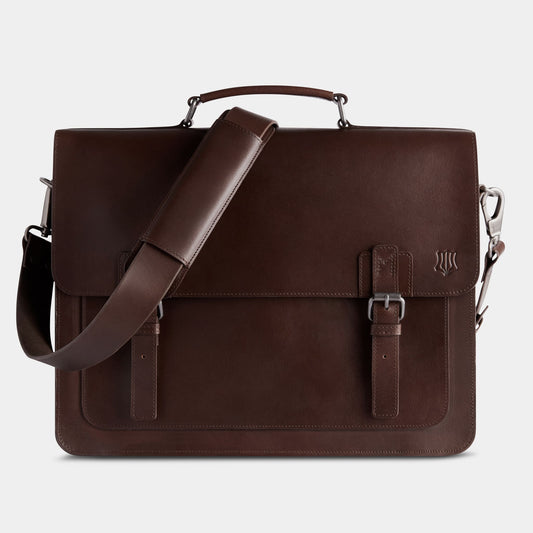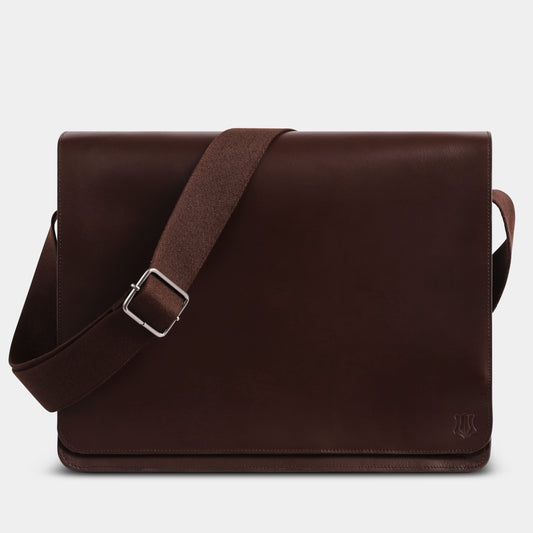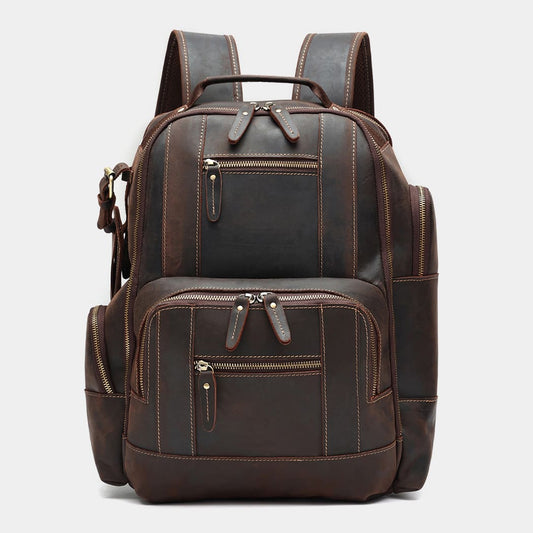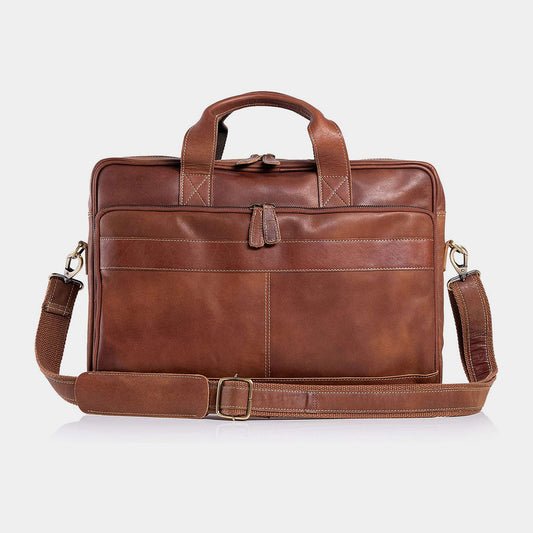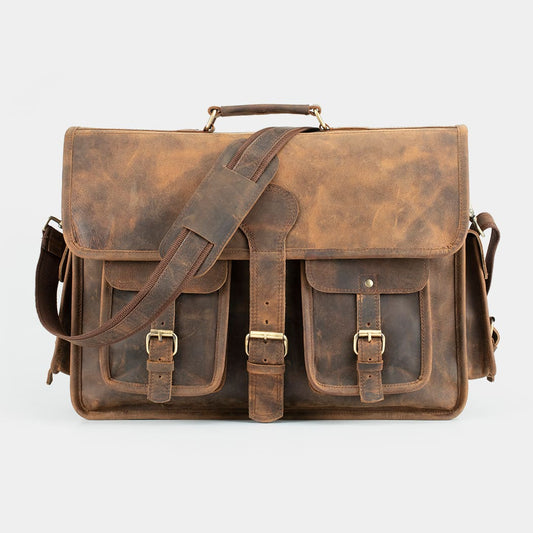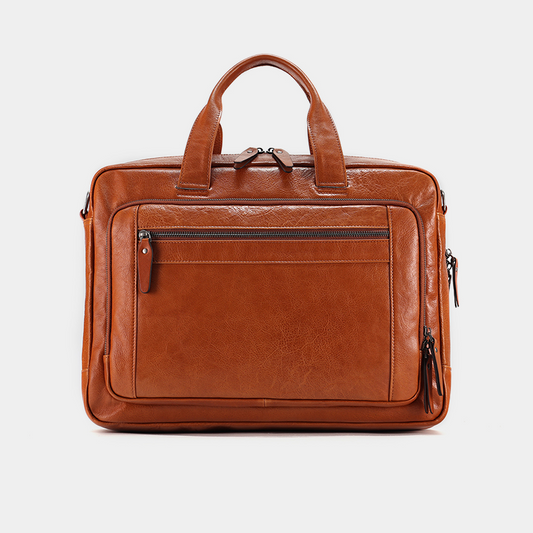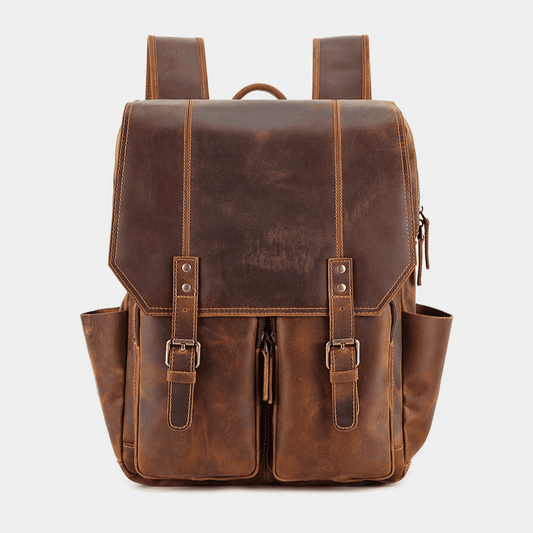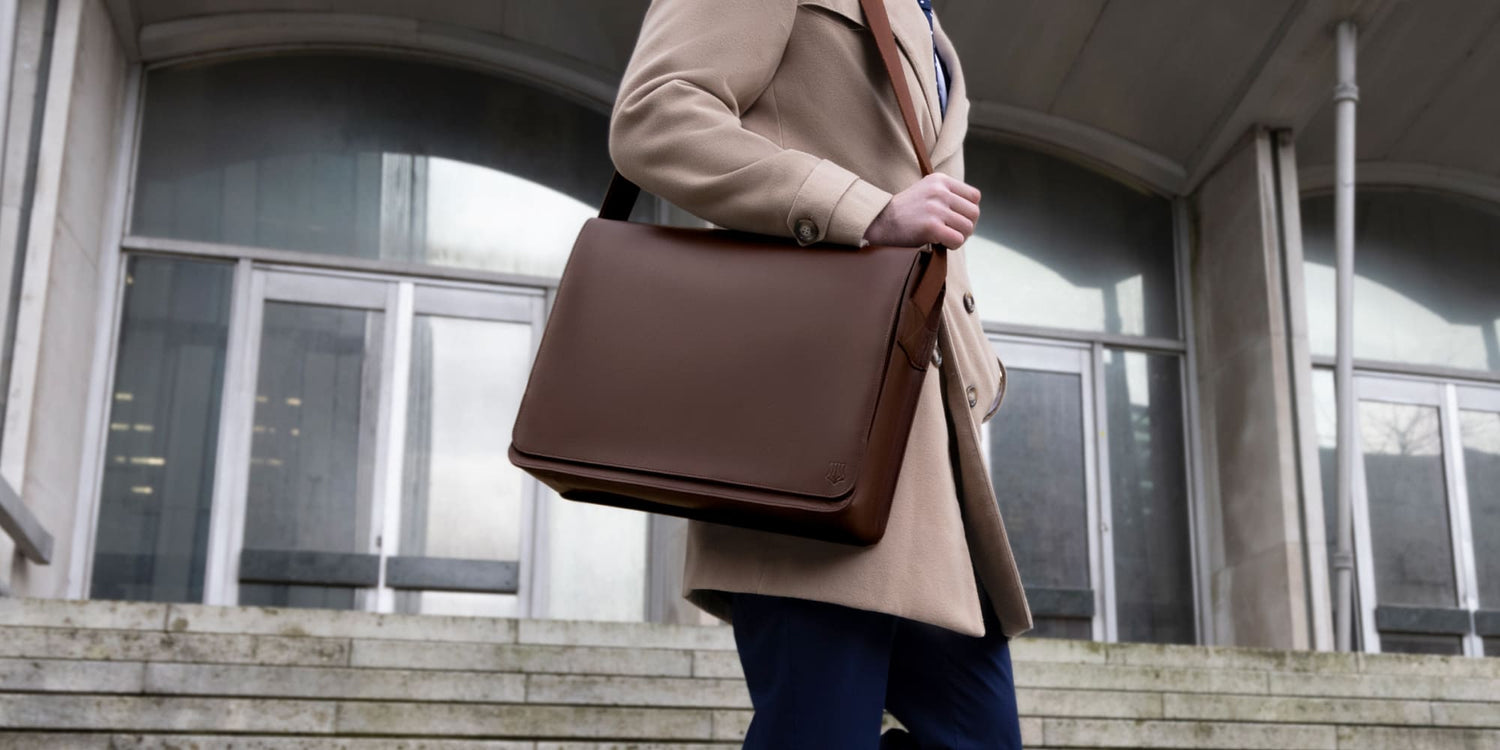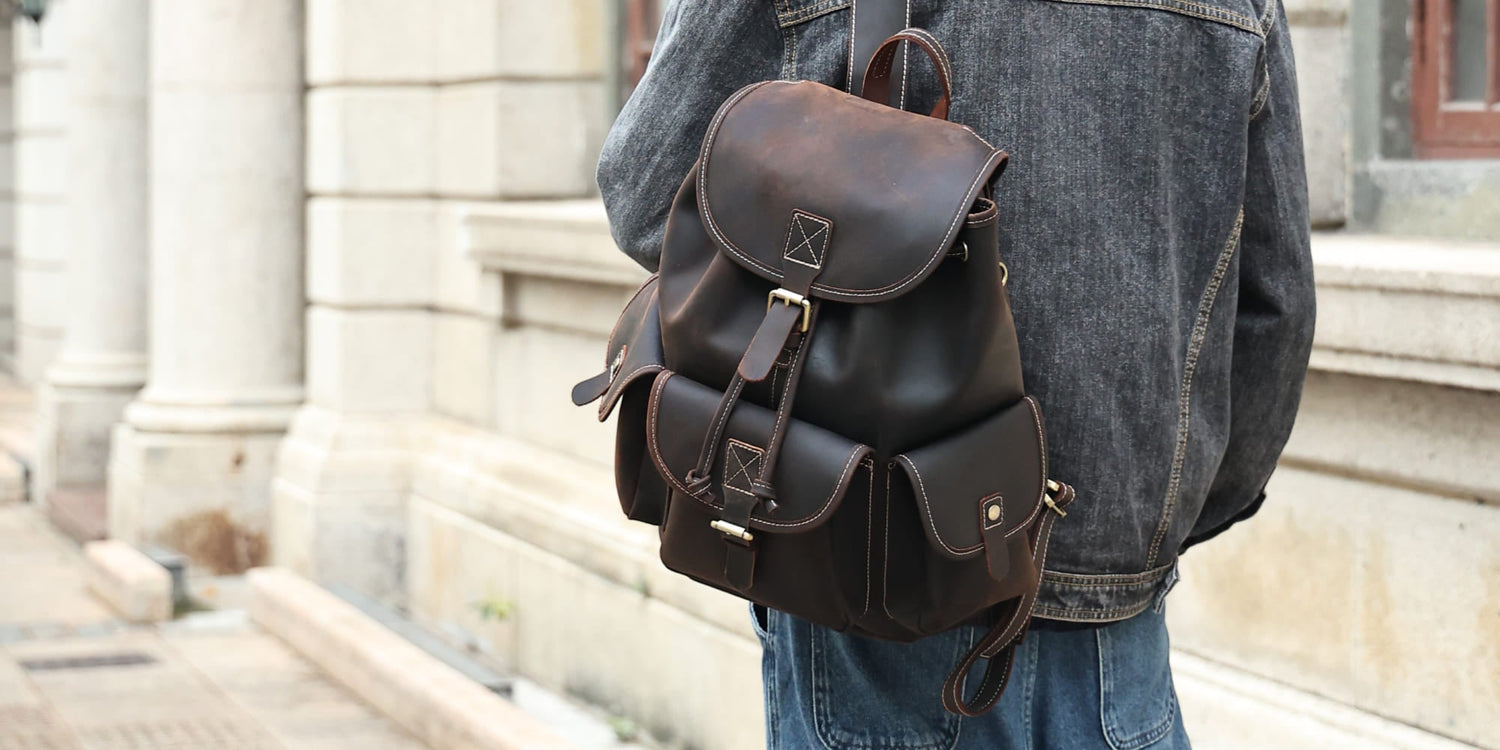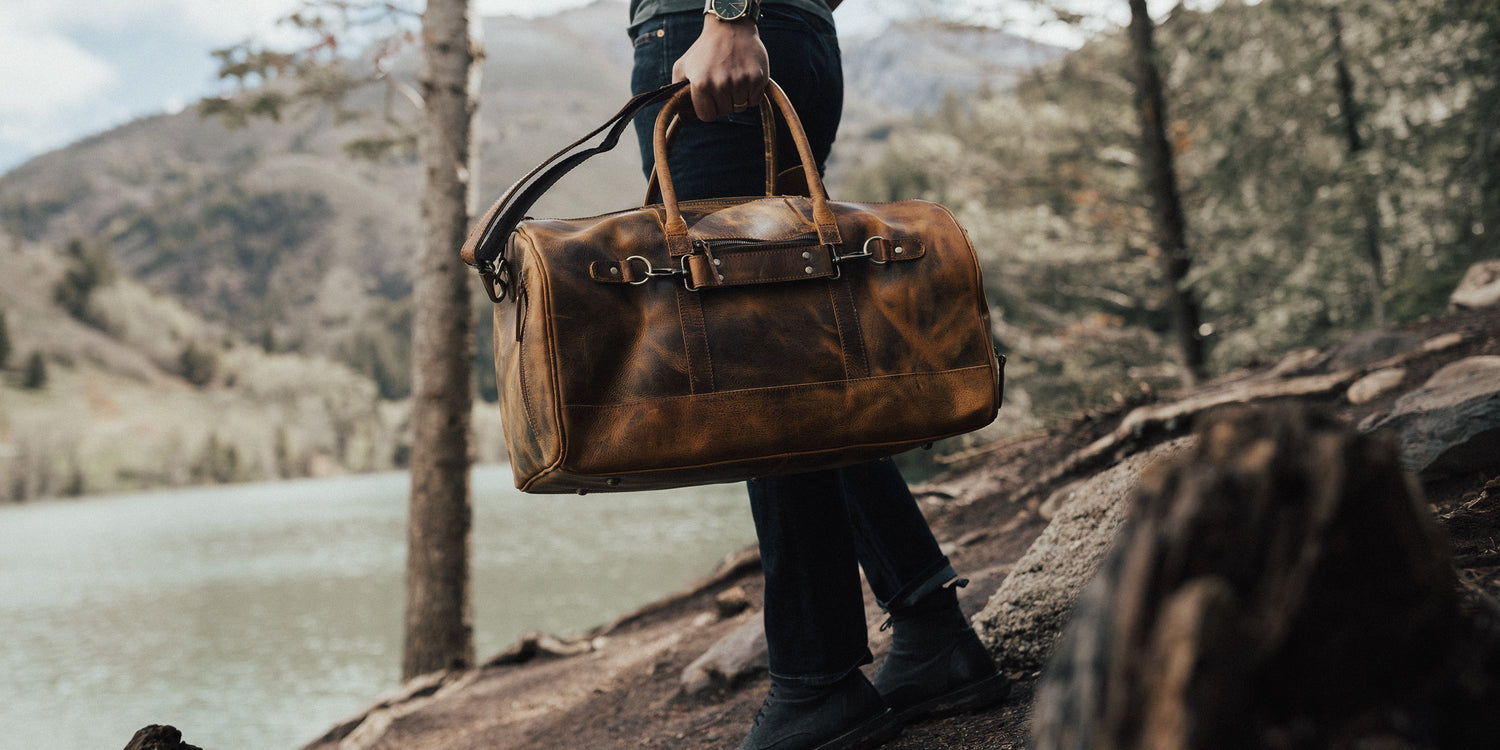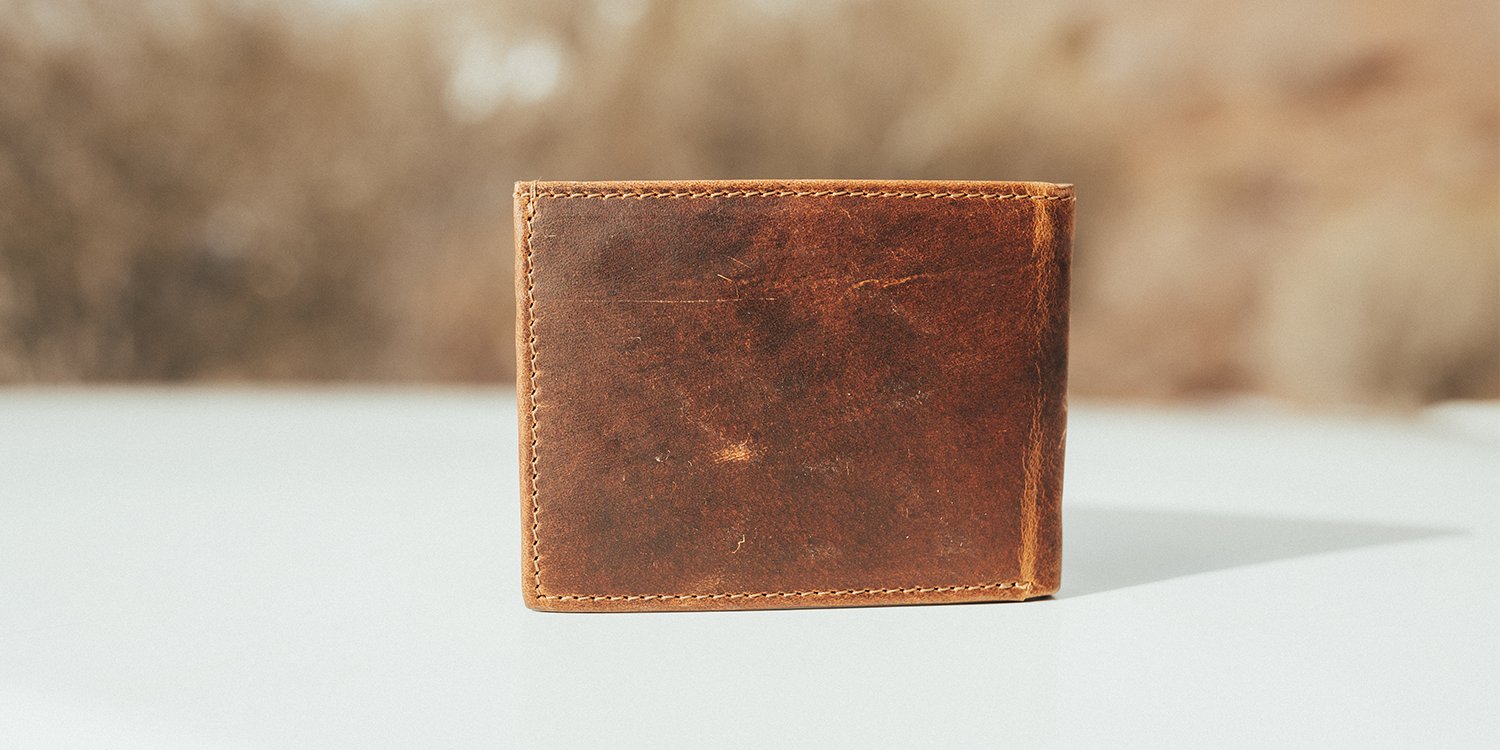Picture this: You're strolling through the city, and your eyes catch a glimpse of a sleek leather bag slung over someone's shoulder.
But wait—this isn't just any leather; it's aniline leather, with a story woven into every crease and wrinkle.
While it may seem like just another bag to some, to those in the know, aniline leather is a testament to craftsmanship and tradition.
In this article, we'll unravel the mysteries of aniline leather, exploring its rich history and unparalleled quality.
Buckle up as we journey through the world of high-quality leather goods, where aniline reigns supreme.
By the end, you'll have a newfound appreciation for the artistry and elegance of aniline leather.
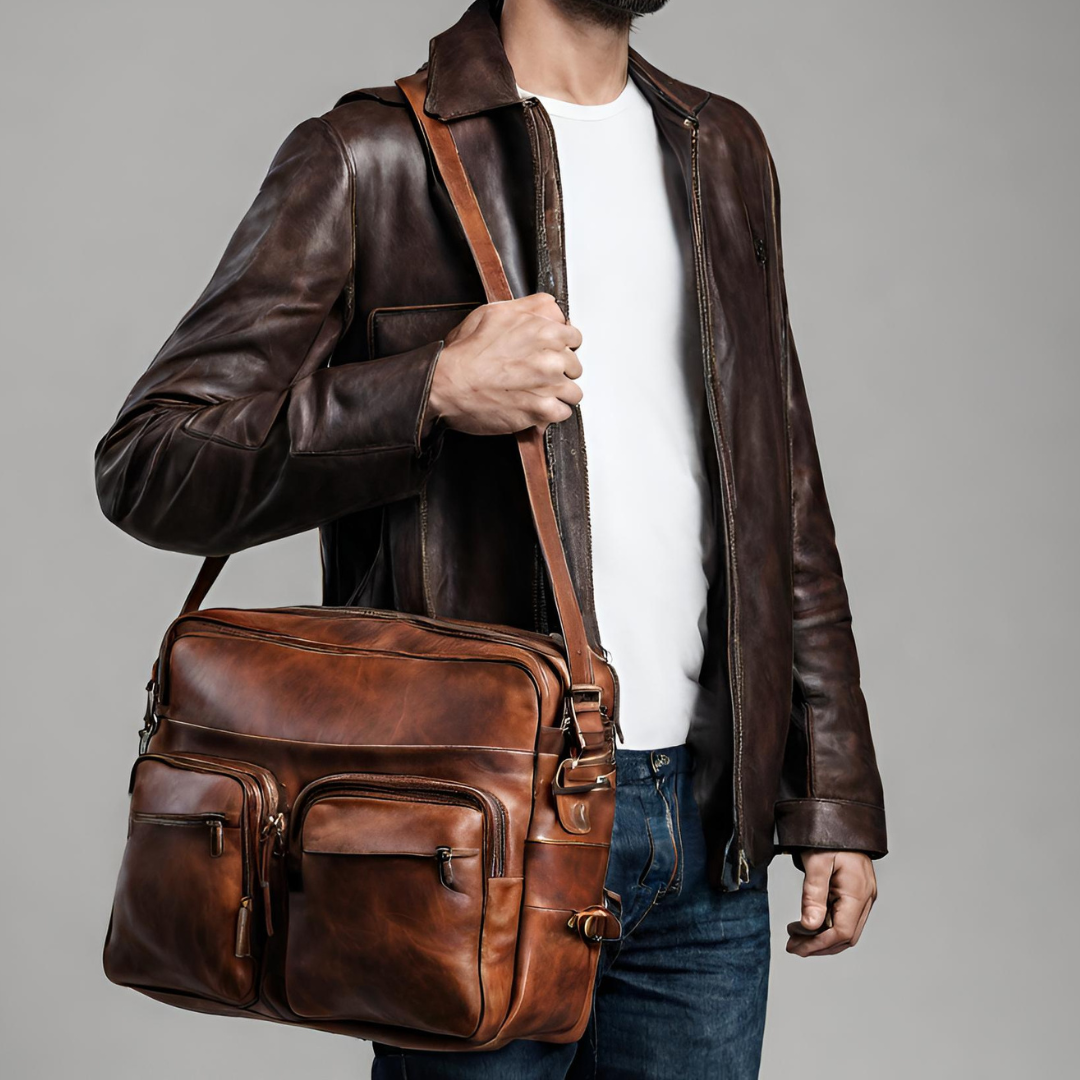
What is Aniline Leather?
Aniline leather is a premium type of leather known for its natural, soft, and luxurious feel. It's dyed with soluble dyes to retain the hide's natural surface characteristics, showcasing a rich, transparent coloration.
Aniline leather isn't just about looks; it's about feeling—soft, supple, and inviting.
Unlike its cousins, aniline leather doesn't hide behind protective layers of paint or pigment; it embraces its natural imperfections.
From the first touch, you'll notice its warmth and flexibility, like a gentle hug from an old friend.
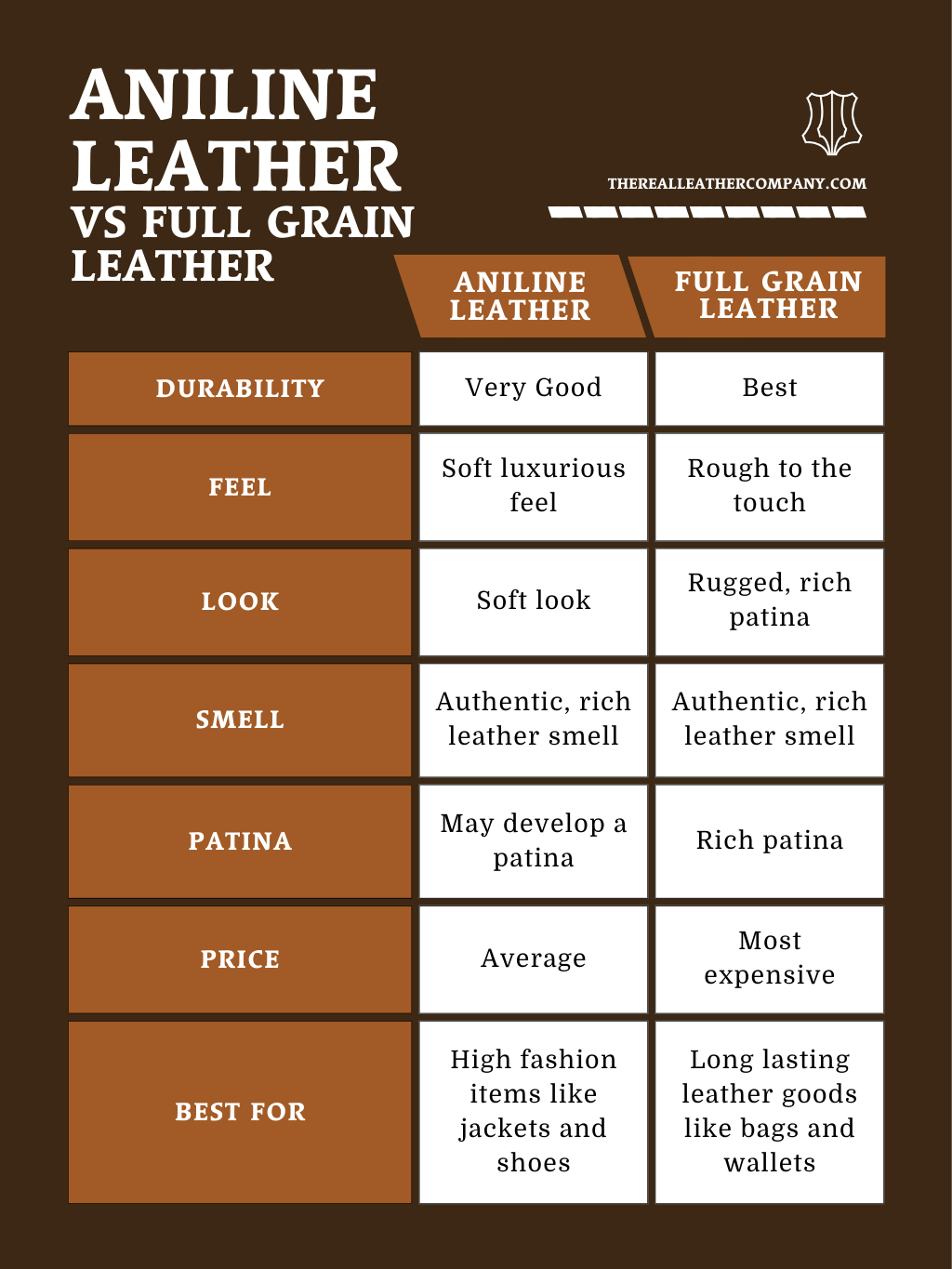
Types of Aniline Leather
Aniline leather comes in various types, each offering unique characteristics and qualities that cater to different preferences and needs.
Full Aniline Leather
Full aniline leather, also known as pure aniline leather or naked leather, is the most natural and unadulterated form of aniline leather.
It undergoes minimal processing, with only a transparent dye applied to enhance the leather's color while allowing its natural grain and markings to remain visible.
Semi-Aniline Leather
Semi-aniline leather is a slightly more processed version of aniline leather, featuring a small amount of pigment or leather finish applied to the surface to create a pigmented leather.
This additional treatment with a semi-aniline dye provides some protection against stains and fading while still retaining the softness and natural appearance of aniline leather.
Pull-Up Leather
Pull-up leather, also known as waxy or oily leather, is a type of aniline leather treated with oils and waxes during the tanning process.
These oils and waxes create a distinctive pull-up effect, where the leather's color lightens when stretched or pulled, then darkens again when released.
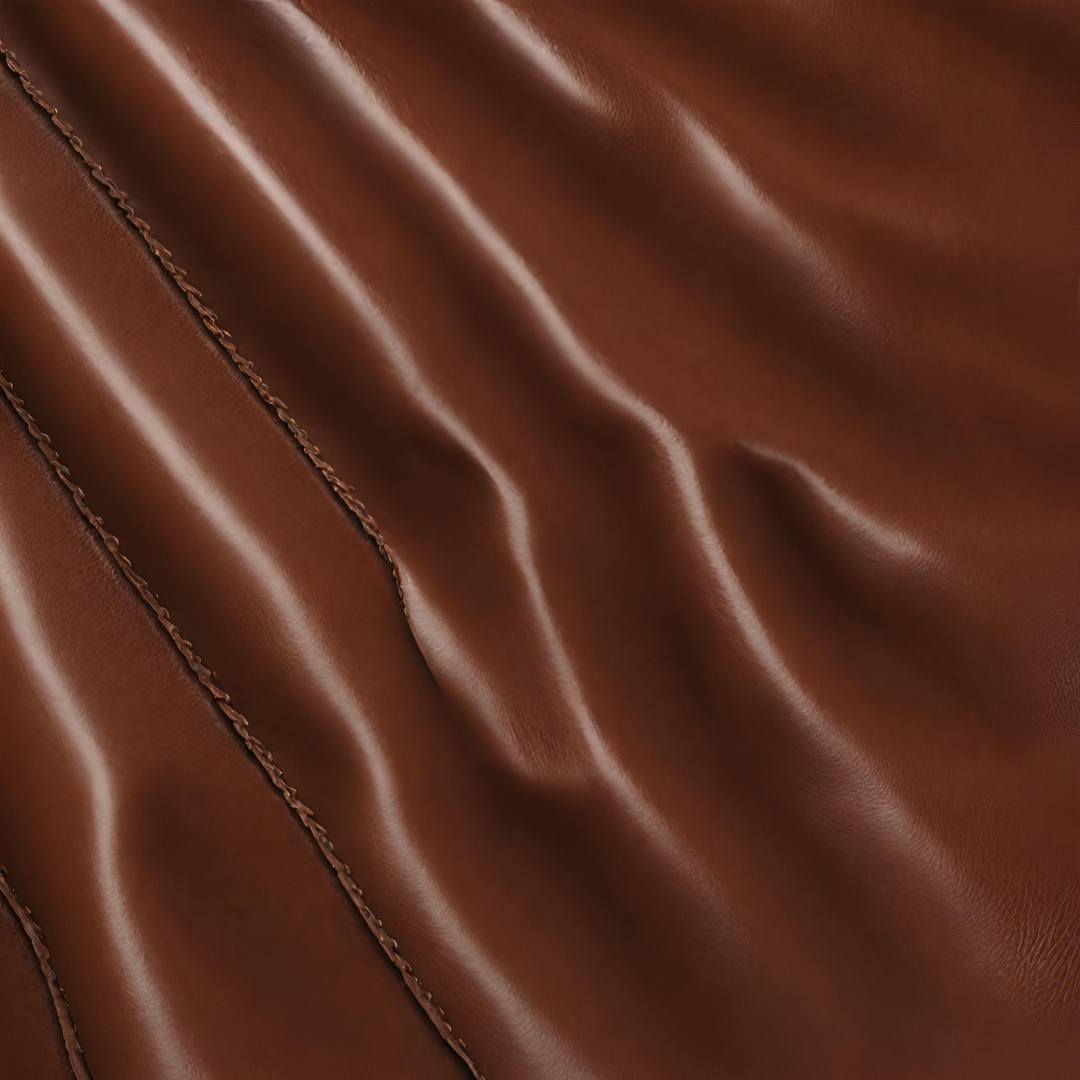
Pros and Cons of Aniline Leather
Aniline leather, like any other material, has its strengths and weaknesses, which are important to consider before making a purchase.
Advantages
1. Natural Beauty and Texture
Aniline leather boasts a natural beauty that is unmatched by many other types of leather.
Its soft and supple texture provides unparalleled comfort, making it a popular choice among leather enthusiasts.
Unlike heavily treated leathers, aniline leather retains the natural characteristics of the hide, such as wrinkles, scars, and grain patterns, giving each piece a unique and authentic look.
This natural beauty adds character to aniline leather products, making them stand out from mass-produced alternatives.
2. Softness and Comfort
The minimal processing of aniline leather ensures that it remains soft and pliable, making it a joy to touch and wear.
Its luxurious feel adds a touch of sophistication to any product it adorns.
Moreover, aniline leather tends to become even softer and more supple with age, enhancing its comfort and appeal over time.
Limitations
However, aniline leather is not without its drawbacks.
It is more susceptible to damage from scratches, stains, and sunlight compared to other types of leather.
1. Vulnerability to Damage
Due to its minimal protective coating, aniline leather requires regular care and maintenance to preserve its appearance and integrity.
It's essential to use leather conditioners and protective sprays to safeguard against potential damage. While aniline leather develops a unique patina over time, it's important to protect it from excessive wear and tear to maintain its beauty.
2. Maintenance and Care Requirements
Moreover, aniline leather products may require more frequent cleaning and conditioning to maintain their pristine condition.
While this may require extra effort, the results are well worth it for those who appreciate the natural beauty of aniline leather.
Additionally, proper care can extend the lifespan of aniline leather products, ensuring that they remain cherished possessions for years to come.

How to Identify Genuine Aniline Leather
Identifying genuine aniline leather is essential for ensuring that you're getting a high-quality product that meets your expectations.
1. Visual Inspection
One way to identify genuine aniline leather is through a visual inspection of the surface characteristics.
Look for natural imperfections such as wrinkles, scars, and grain patterns, which are characteristic of aniline leather.
Genuine aniline leather will have a rich, transparent coloration that allows the natural grain of the hide to shine through.
2. Touch and Feel
In addition to visual cues, the texture of aniline leather can provide clues to its authenticity.
Genuine aniline leather will feel soft, supple, and slightly warm to the touch, reflecting the highest quality craftsmanship.
Run your fingers across the surface of the leather to feel its smoothness and flexibility, which are hallmarks of genuine aniline leather.
3. Absence of Coating
Unlike heavily treated leathers, genuine aniline leather will have a natural look and feel without the presence of a heavy coating.
Inspect the surface of the leather closely to ensure that it doesn't have a plastic-like sheen or feel excessively smooth, as these may indicate the presence of a protective coating.
4. Natural Imperfections
Embrace the natural imperfections of aniline leather, such as wrinkles, scars, and grain patterns, as they add character and authenticity to the material.
Don't be deterred by minor blemishes or variations in color, as these are normal characteristics of genuine aniline leather.
5. Seek Expert Advice
If you're unsure about the authenticity of a leather product, don't hesitate to seek advice from experts in the field.
Consult with reputable leather retailers or craftsmen who specialize in aniline leather to get their professional opinion.
6. Trust Your Instincts
Ultimately, trust your instincts when identifying genuine aniline leather.
If something feels off or too good to be true, it's best to err on the side of caution and opt for a trusted source or retailer.
By following these tips and paying attention to the unique characteristics of aniline leather, you can confidently identify genuine products and enjoy their beauty and quality for years to come.
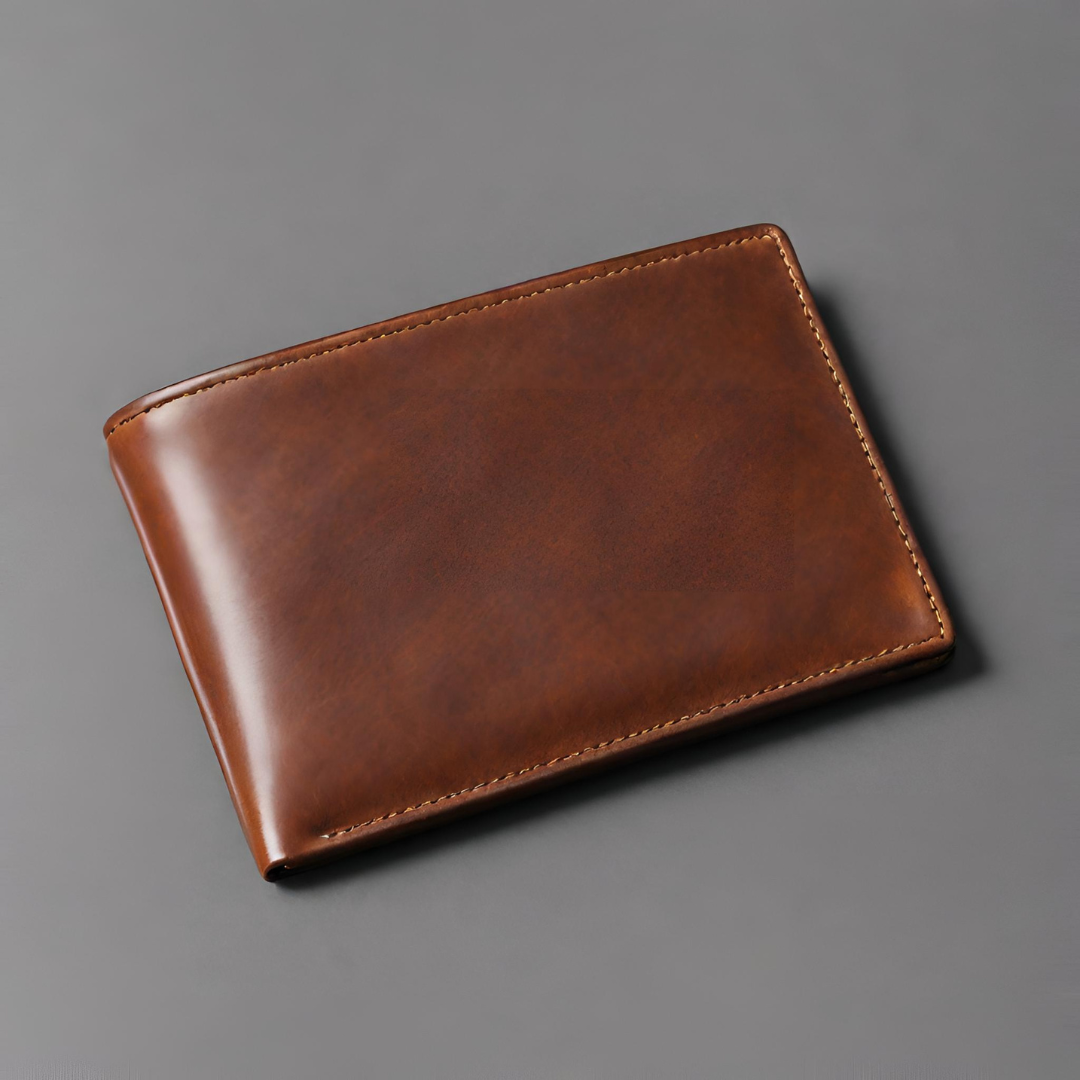
History of Aniline Leather
Aniline leather has a rich history that spans centuries, dating back to ancient civilizations.
The origins of aniline leather can be traced back to the early days of leatherworking, where artisans experimented with different tanning methods to enhance the quality of hides.
Discovery of Aniline Dyes
The development of aniline leather was propelled by the discovery of aniline dyes by William Henry Perkin in the mid-19th century.
These synthetic dyes revolutionized the textile industry by allowing for vibrant and long-lasting coloration of fabrics and leathers.
Adoption in Leather Production
Leather craftsmen quickly recognized the potential of aniline dyes in enhancing the natural beauty of hides.
By dyeing leather with aniline dyes, they were able to achieve rich, translucent colors that retained the unique characteristics of the hide.
Rise in Popularity
The popularity of aniline leather soared during the Victorian era, as demand for luxurious and aesthetically pleasing leather goods grew among the affluent classes.
Aniline leather became synonymous with luxury and sophistication, adorning the homes of aristocrats and the wardrobes of the fashionable elite.
Modern-Day Resurgence
While the popularity of aniline leather waned in the early 20th century with the advent of synthetic materials, it experienced a resurgence in the latter half of the century.
Consumers began to appreciate the natural beauty and authenticity of aniline leather, seeking out products that reflected their appreciation for craftsmanship and quality.
Contemporary Applications
Today, aniline leather continues to be prized for its timeless appeal and unparalleled comfort.
It is used in a variety of applications, including leather furniture upholstery, briefcases, backpacks, wallets and automotive interiors, where its natural beauty and durability shine through.
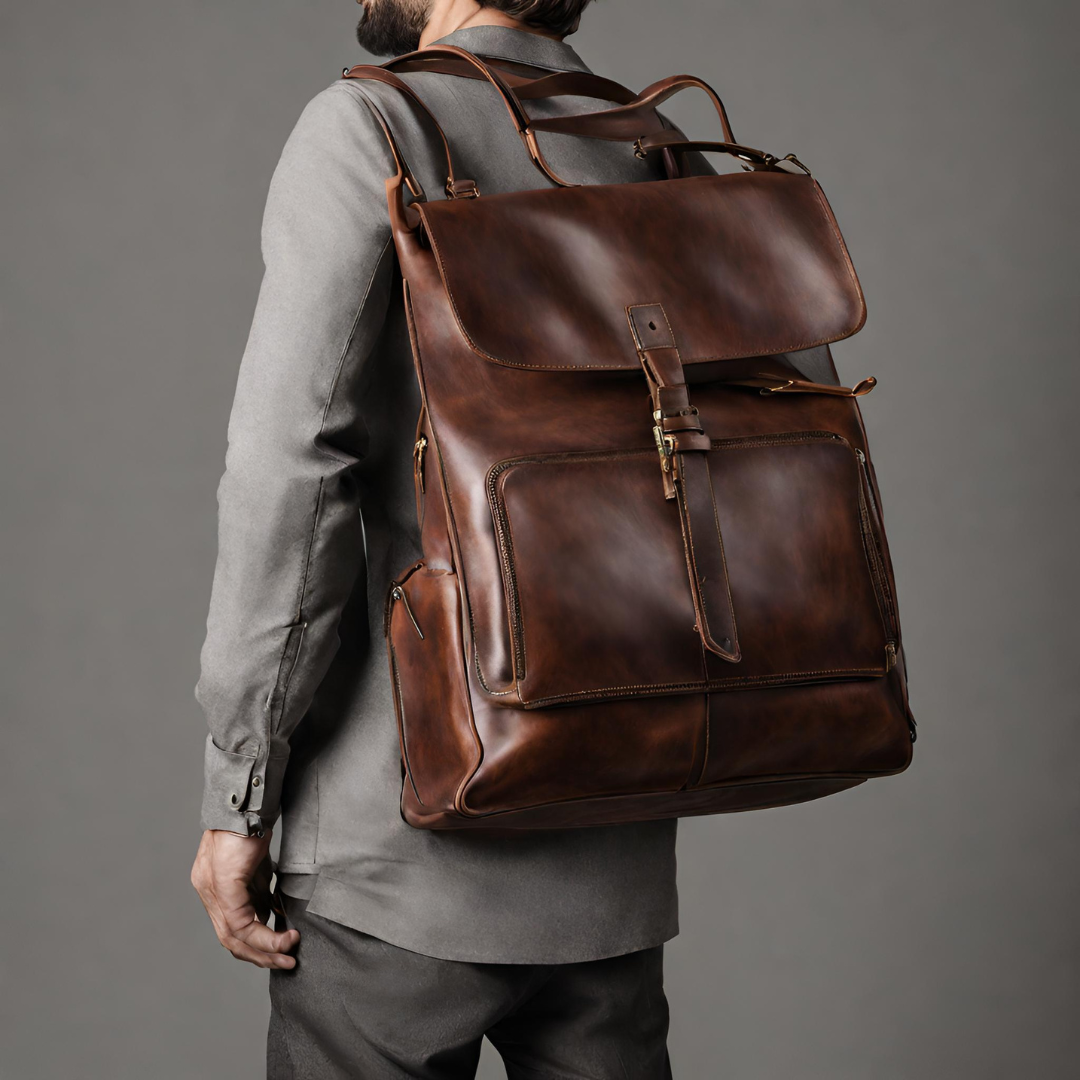
How to Make Aniline Leather
In the world of leather crafting, the journey of Aniline leather begins long before it graces the shelves of stores.
Aniline Leather Tanning Process
Aniline leather tanning stands out for its minimalist approach, emphasizing natural beauty over artificial enhancements.
The process starts with selecting the finest hides, typically sourced from top-quality cattle breeds.
Then, the hides undergo a meticulous cleaning process to remove impurities and prepare them for tanning.
Unlike other leather types, aniline leather is dyed using soluble dyes, allowing the natural grain and markings of the hide to remain visible.
Craftsmen carefully apply the dye in multiple layers, ensuring an even and rich coloration while preserving the leather's softness and suppleness.
Quality of Aniline Leather
Quality is at the heart of aniline leather production, with craftsmen meticulously inspecting each hide for imperfections.
Factors like hide thickness, texture, and natural markings play a crucial role in determining the final quality of aniline leather.
Craftsmen prioritize hides with minimal flaws, ensuring that every piece of aniline leather meets the highest standards of excellence.
Factors Influencing Quality
From the breed of cattle to the environment they inhabit, various factors influence the quality of aniline leather.
Cattle raised in pristine environments with minimal exposure to elements tend to produce hides of superior quality, resulting in finer aniline leather products.
Grading and Selection
Grading plays a pivotal role in the selection process, with craftsmen categorizing hides based on their quality and suitability for aniline leather production.
Only the finest hides make the cut, ensuring that each aniline leather product upholds the brand's reputation for excellence and luxury.
In the next section, we'll delve into the pros and cons of aniline leather, shedding light on its unique attributes and considerations for consumers.

Common Myths and Misconceptions
In the world of aniline leather, myths and misconceptions abound, often clouding the true characteristics and qualities of this exquisite material.
Aniline Leather vs. Other Types
One common myth surrounding aniline leather is that it is indistinguishable from other types of leather, such as semi-aniline, nubuck, suede full-grain or top grain
In reality, aniline leather stands out for its unique production process and natural characteristics, setting it apart from its counterparts.
Aniline Leather vs. Semi-Aniline
Another misconception is that aniline leather and semi-aniline leather are one and the same.
Semi-Aniline leather is a type treated with a small amount of pigment or finish to the surface coating or topcoat, offering some protection against stains and fading while retaining the softness and natural appearance of aniline leather.
While both types may share similarities in terms of softness and appearance, aniline leather undergoes minimal processing and retains more of its natural features compared to semi-aniline leather.
Aniline Leather vs. Full-Grain and Top Grain
Similarly, there is often confusion between aniline leather, full grain leather and top grain leather
While aniline leather is typically made from the natural leather of full-grain hides, not all full-grain leather is aniline. Aniline leather is typically not made from top grain leather cowhide.
Durability and Longevity
One of the most prevalent myths about aniline leather is that it lacks durability and longevity compared to heavily treated leathers.
While it's true that aniline leather may require more care and maintenance, properly cared for, it can last a lifetime and develop a beautiful patina over time.
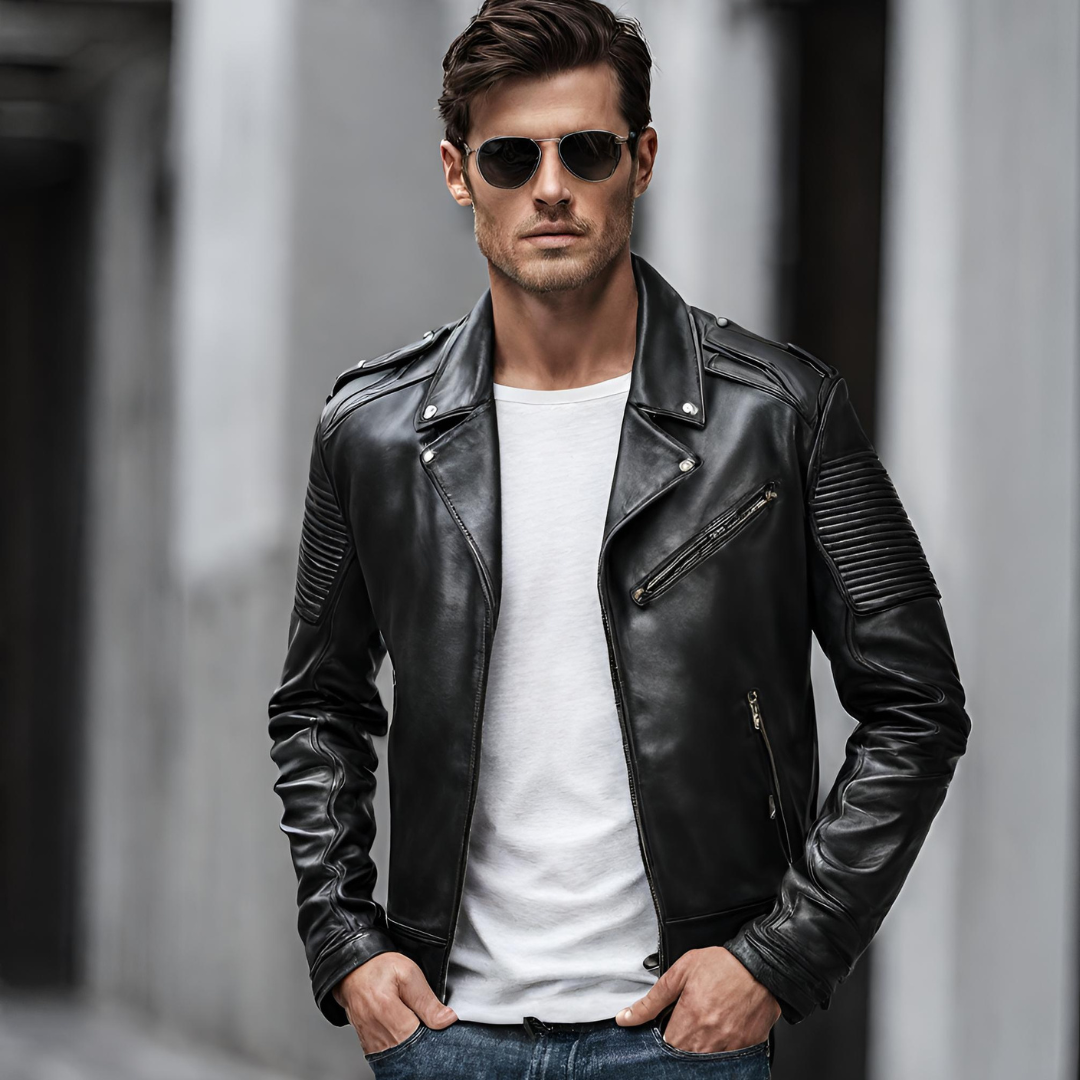
Applications and Uses of Aniline Leather
Aniline leather finds its way into various aspects of everyday life, from fashion to interior design, adding a touch of luxury and sophistication to each application.
Fashion and Apparel
In the realm of fashion, aniline leather reigns supreme, adorning everything from jackets and coats to shoes and bags.
Crafted from high-quality hides, aniline leather garments exude elegance and style, making them coveted pieces in any wardrobe.
Leather Jackets and Coats
Aniline leather jackets and coats are prized for their softness and durability, providing both warmth and style during colder months.
Their natural beauty and unique characteristics make them timeless pieces that never go out of fashion.
Shoes and Accessories
Aniline leather is also a popular choice for footwear and accessories, including messenger bags, belts, saddles and wallets.
Its luxurious feel and rich coloration add a touch of sophistication to any ensemble, elevating even the simplest outfit.
Furniture and Interior Design
Beyond fashion, aniline leather finds its way into homes and offices, enhancing the aesthetics of high-end furniture and interior design.
Sofas and Chairs
Aniline leather sofas and chairs are coveted for their comfort and elegance, providing a luxurious seating experience for homeowners and guests alike.
Their natural beauty and durability make them enduring pieces that stand the test of time.
Home Décor and Upholstery
Aniline leather is also used in various home décor applications, such as cushions, pillows, and throws.
Its rich coloration and soft texture add warmth and sophistication to any living space, creating a cozy and inviting atmosphere.
Automotive Interiors
In the automotive industry, aniline leather is a premium choice for upholstery, adding a touch of luxury to car interiors.
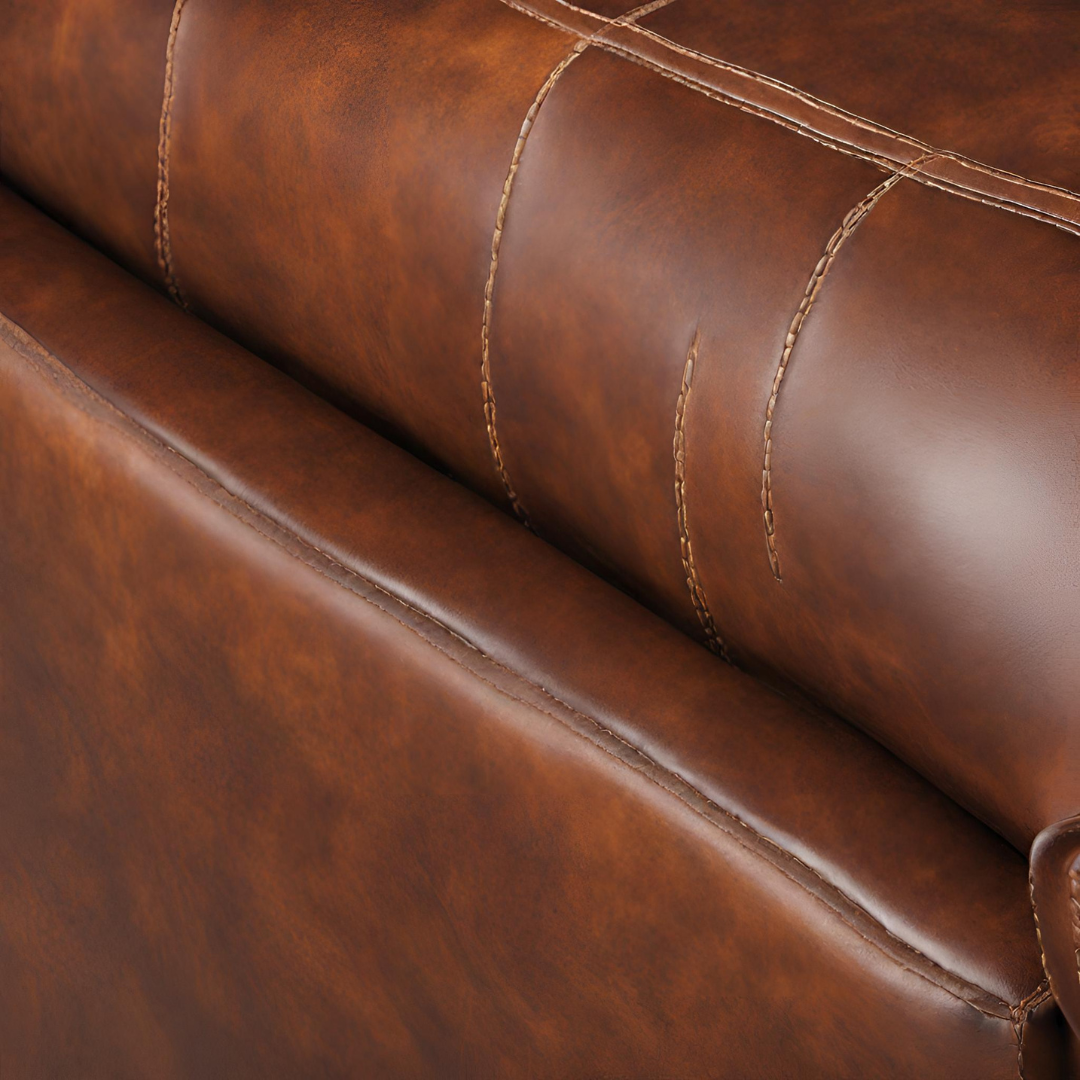
Care and Maintenance
Proper care and maintenance are essential to preserve the beauty and longevity of aniline leather products, ensuring that they remain in pristine condition for years to come.
Gentle Cleaning
When it comes to cleaning aniline leather, less is more. Use a soft, damp cloth and a good quality leather cleaner to gently wipe away dirt and stains on the leather surface
Avoid using harsh chemicals or abrasive cleaners, as they can damage the delicate surface of the leather.
Conditioning
Regular conditioning is key to keeping aniline leather soft, supple, and moisturized. Use a high-quality leather conditioner to nourish the leather and prevent it from drying out or cracking.
Apply the conditioner sparingly and evenly, using a clean cloth or sponge to massage it into the leather in circular motions.
Protection from Sunlight
Aniline leather is susceptible to fading and discoloration when exposed to direct sunlight for prolonged periods. To protect your leather products, avoid placing them in direct sunlight or near heat sources such as radiators or fireplaces.
Storage
When not in use, store aniline leather products in a cool, dry place away from direct sunlight and moisture. Avoid folding or creasing leather items, as this can cause permanent damage to the material.
Professional Cleaning
For stubborn stains or extensive cleaning, consider seeking professional assistance from a leather care specialist.
Professional cleaners have the expertise and equipment to safely clean and restore aniline leather products without causing damage.
Preventative Measures
To prevent damage and maintain the appearance of aniline leather, consider using protective sprays or coatings designed specifically for leather.
These products can help repel water, stains, body oils and other contaminants, keeping your leather products looking their best.
Regular Inspection
Lastly, regularly inspect your aniline leather products for signs of wear and tear, such as scratches, scuffs, or color fading.
Address any issues promptly to prevent further damage and ensure that your leather products continue to look and feel their best for years to come.
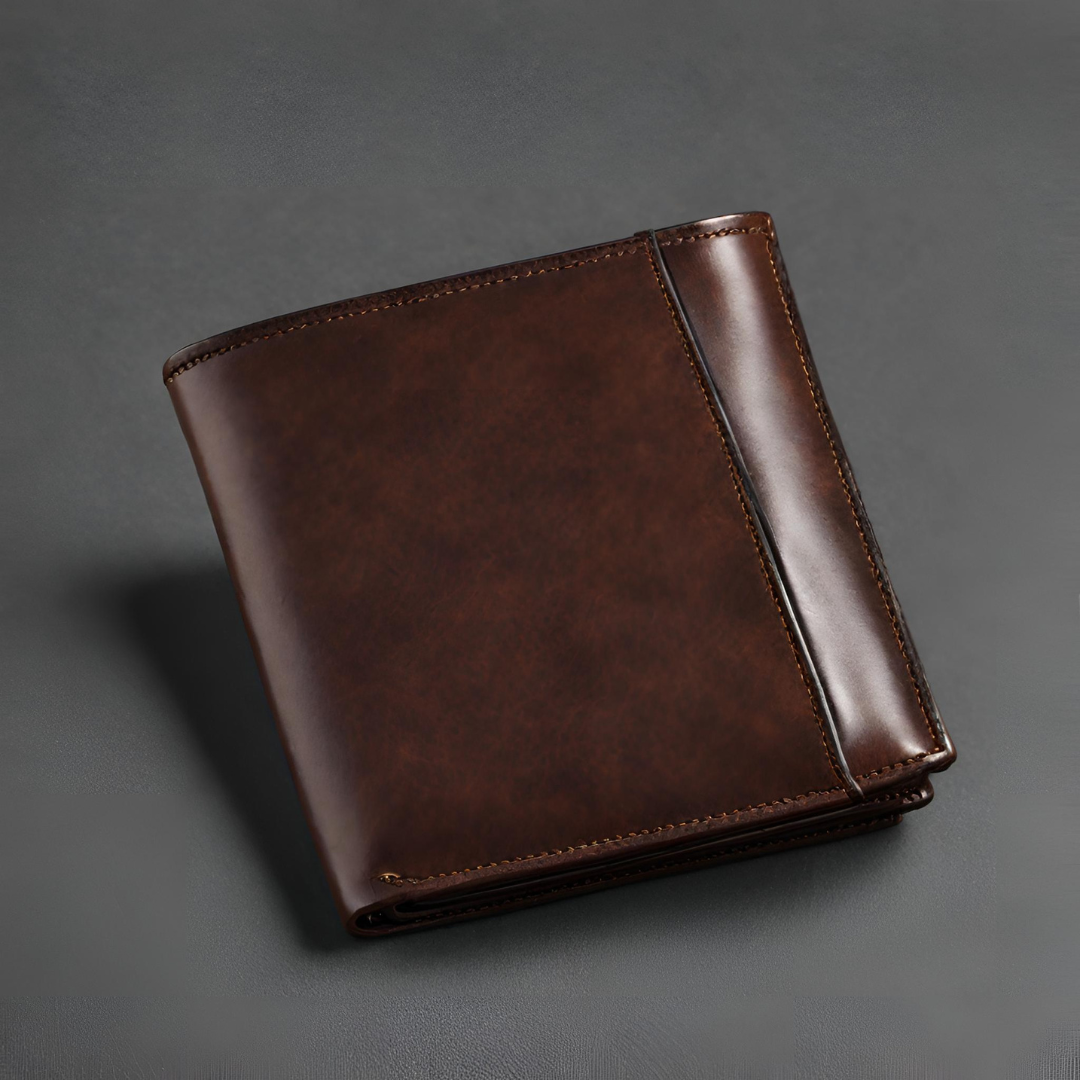
FAQs
1. Is Aniline Leather Waterproof?
Aniline leather is not inherently waterproof due to its minimal processing and lack of protective coatings. However, it can be treated with waterproofing products to increase its resistance to moisture.
2. How Can I Clean Aniline Leather?
Cleaning aniline leather requires a gentle approach. Use a soft, damp cloth to wipe away surface dirt and stains, and avoid harsh chemicals or abrasive cleaners that can damage the leather.
3. Does Aniline Leather Fade?
Aniline leather may fade over time when exposed to direct sunlight or harsh environmental conditions. To prevent fading, avoid prolonged exposure to sunlight and consider using protective sprays or coatings.
4. Is Aniline Leather Durable?
While aniline leather may not be as durable as heavily treated leathers, it can still be quite durable when properly cared for. Regular conditioning and maintenance can help prolong the lifespan of aniline leather products.
5. Can Aniline Leather Be Repaired?
Minor scratches and scuffs on aniline leather can often be buffed out or minimized with leather conditioning products. For more extensive damage, such as tears or deep stains, professional repair services may be necessary.
